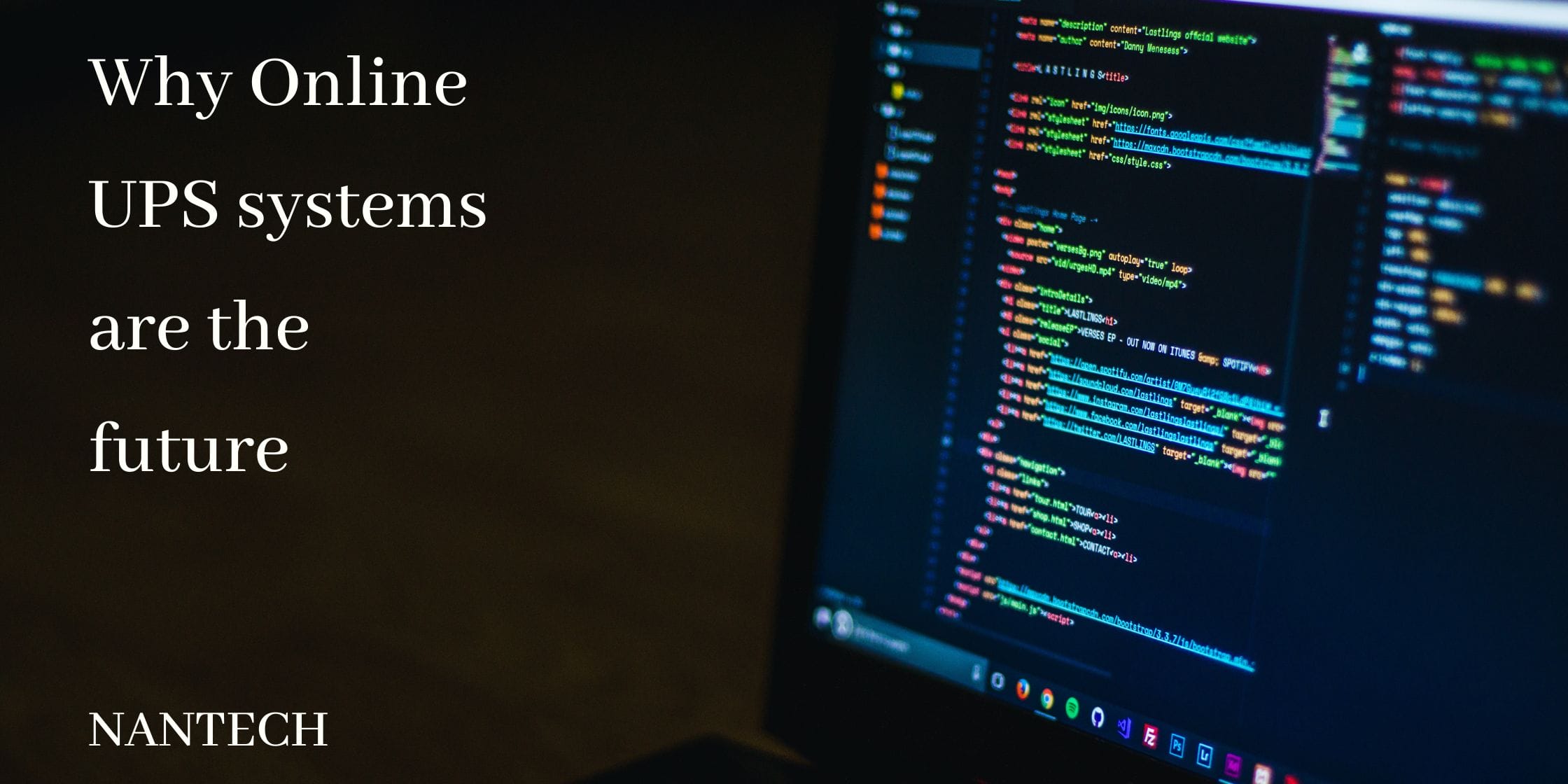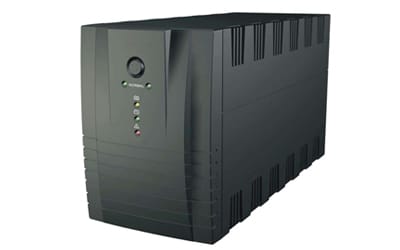- Home
- About us
- Products
- Dealer Enquiry
- Contact Us
- 044 -2486 1994
- +91 99623 98222
- sales@nantech.in
- REQUEST A QUOTE

An Uninterrupted Power Supply (UPS) system is an emergency power system that provides backup power for your connections when the main power supply line fails to deliver or the voltage levels drop below a certain threshold. During Power Cuts, A UPS system comes in very handy as it not only supplies three-phase power to your equipment but it also protects it from supply line noise, surges, and voltage EMFs.
We still use these systems for backup power supply, but now that Online UPS systems are the future, we should discuss them first.
In the earlier days of UPS systems, most of Chennai used offline systems. These systems worked by basically providing backup power to the load only when the mainline failed. These systems directly give raw mains to the connections and a connected battery in parallel to the supply line. Link to the mainline ensures constant power supply to the battery for charging, and in a power failure, or if voltage levels drop, then battery power is switched on.
The drawback is that since it connects directly to the main power supply line, it provides little surge protection, which can damage your electronics. The other liability is that since the battery supply has to go through an inverter and then to your equipment, there is a time delay of around 10ms for power delivery and little to no voltage regulation. It isn’t a reliable system overall.
 These systems are a slight improvement over offline UPS systems. Line-Interactive Systems work by supplying power to the inverter, which then has a bypass line that sends DC to a connected battery. The supply line also connects to the main switch. When a power failure occurs, or a voltage drop occurs, the transfer switch closes, and we lose connection to the mainline. The battery then starts supplying DC power to the inverter, which converts to AC and supplies to your connections.
These systems are a slight improvement over offline UPS systems. Line-Interactive Systems work by supplying power to the inverter, which then has a bypass line that sends DC to a connected battery. The supply line also connects to the main switch. When a power failure occurs, or a voltage drop occurs, the transfer switch closes, and we lose connection to the mainline. The battery then starts supplying DC power to the inverter, which converts to AC and supplies to your connections.
The problem is that even though they protect your equipment better, it doesn't offer complete protection from surges. It has a power delivery time delay of around 5ms and voltage regulation of ±8-15% within nominal voltage values. It is an improvement, but compared to Online systems, it is still lacking.
These are the latest in the UPS systems! The improvement over Offline and Line-Interactive Systems is significant. They use a 'double-conversion' system. A Rectifier connected to the main supply passes DC to the inverter supplying AC, and a battery connected in parallel to this line along with a bypass switch. In a power failure, the power switch turns off, there is no power going through the rectifier, and the battery-inverter supply continues.
Thus, there is maximum protection from voltage surges, almost no time delay, and ±2-3% voltage regulation of the nominal values. Other advantages are:
These make Online UPS systems used in many critical areas such as data centers, hospitals, and businesses. Many people are upgrading their existing UPS systems to Online UPS systems!
So if you want the best Online UPS systems in Chennai, come to us at Nantech and check our UPS systems here!
The Beginner’s Guide to UPS Systems
Why Is It A Must To Invest In UPS or Inverter in Chennai?
UPS Inverter In Chennai – Understanding The Variations
POWER QUALITY AUDIT OF NANTECH PRODUCTS
Emerson (Vertiv) UPS
Are We An Electricity-Surplus Nation?
Replace a UPS Battery or Buy a New UPS System?
A Closer Look at Solar Inverter vs Normal Inverter